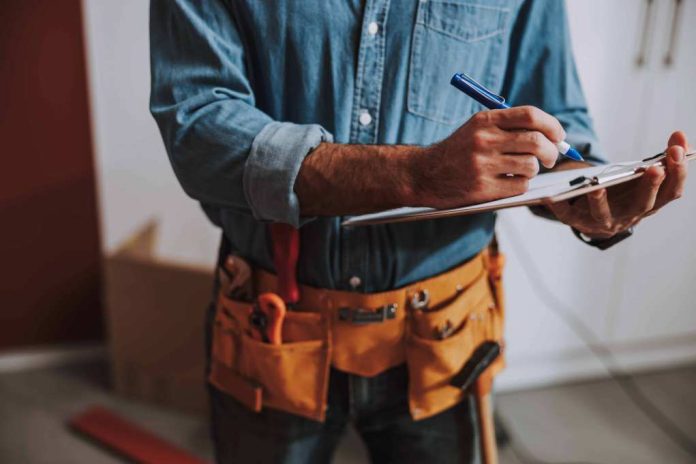
Homeowners may not realize that home repairs are a cost they still need to account for. Repairing or improving a home isn’t cheap. It’s expected that homeowners will spend $3,600 annually on home repairs alone in 2022! Not every homeowner has a few thousand dollars lying around to handle this cost. However, there is some good news! There are support opportunities available that can help homeowners deal with home repair expenses.
Home Repair Opportunities to Consider
Surprisingly, many people don’t realize that the federal government has support opportunities designed for those who want to improve or repair their homes. Some support options that are worth considering include:
- 203(k) Rehabilitation Mortgage Insurance Program
- Low Income Home Energy Assistance Program (LIHEAP)
- Rural Housing Repair Loans and Grants program
- Weatherization Assistance Program (WAP)
203(k) Rehabilitation Mortgage Insurance Program
This support opportunity is useful to both homebuyers and homeowners. In terms of being a homebuyer, this insurance program will allow them to finance their home purchase on top of the cost of rehabilitating the property. On the other hand, in terms of being a homeowner, the same opportunity applies when they are refinancing. To put it simply, this loan handles both the cost of the property as well as repairs that the property needs. This program makes the complicated and expensive process of financing a home with repairs easier and more affordable. That’s because 203(k) ensures a single loan and long-term. These loans can have either a fixed interest rate or an adjustable interest rate.
Not only do the borrowers see benefits, but so do the lenders. These loans come along with extra protection against losses that lenders can find themselves dealing with. For a property to qualify, it needs to be at least one year old. On top of that, rehabilitation of the property must be worth at least $5,000. It’s also important to note that the property’s value must be within the FHA mortgage limit. However, the limit will vary based on the area. The limit will be the lesser of the following:
- The property’s value before rehabilitation has been done on top of the actual cost of rehabilitation
- 110% of the property’s appraisal value after rehabilitation has been done
How Does it Work?
How these loans work is that if a person is buying a property, then a portion of the loan will go towards paying the seller. On the other hand, if a homeowner is refinancing their property, then the loan funds will go towards handling the remainder of the mortgage that already exists. It doesn’t matter either way because the remaining funds of the loan in both cases go into an escrow account. They are released after the property’s rehabilitation is finished. It’s important to keep in mind that borrowers have the chance to see extra fees. The fees that borrowers may need to face vary, depending on the lender. For example, some possible fees that borrowers come across are:
- More Expensive Home Appraisal Fees
- Supplemental Origination Fee
- Document Preparation Fees
- Plan Review Fees
Eligible Loan Activities
Many people may not understand what it means to rehabilitate a home. While you have to keep the minimum required amount in mind of $5,000, that isn’t the limit. This means the home repairs can be pretty big! For example, the following home repairs would be what you could use your loan funds on:
- Adding downspouts
- Adding floor treatments
- Energy efficiency improvements
- Adding floors
- Adding gutters
- Home appearance improvements
- Adding roofing
- Improvements to the home’s function
- Improving accessibility for those with disabilities
- Installation of a well
- Major landscaping
- Removal of health hazards
- Reconstruction of the property
- Removal of safety hazards
- Replacement of plumbing
- Home modernizations
- Replacing downspouts
- Installation of a septic system
- Replacing floor treatments
- Reconditioning of plumbing
- Replacing floors
- Replacing gutters
- Structural changes in the property
- Replacing roofing
Anyone interested in this financing opportunity will need to go to an eligible private lender.
Low Income Home Energy Assistance Program (LIHEAP)
When people need help with utility bills, LIHEAP is a great opportunity to consider. That’s because this assistance option helps with:
- Heating Costs
- Cooling Costs
- Weatherization
- Energy-Related Home Repairs
There are opportunities for a person to qualify automatically. If a person benefits from other programs like Supplemental Security Income (SSI), Temporary Assistance for Needy Families (TANF), and Supplemental Nutrition Assistance Program (SNAP) then they will automatically be eligible. Individuals that want to get more information can reach out to 1-866-674-6327. On top of that, individuals also have the opportunity to reach out via email at [email protected].
Rural Housing Repair Loans and Grants Program
These loans (and grants) are a great opportunity for people that want to:
- Fix up their home
- Make home improvements
- Update and modernize their home
- Get rid of health hazards and safety hazards in the home
The properties themselves will also need eligibility criteria. This includes making sure the property is in an eligible rural area. The loan terms allow borrowers up to 20 years at a 1% fixed interest rate. There is a maximum when it comes to these loans, which is $20,000. There are also limits to keep in mind for the grants. The grants have a limit of $7,500. The grants are only available for those that are 62 years old or older. Qualifying borrowers may combine the loan and the grant as well.
Weatherization Assistance Program
Households across the country can benefit from this opportunity. Through WAP, eligible households can make their homes more energy-efficient. Through energy efficiency, homes could see some savings on their energy bills! WAP can save households $372 annually on average.
The Department of Energy (DOE) has the responsibility of giving WAP funding to states so that each state can figure out how to run its version of the program. Applicants will need to meet the qualifications for the program. There may be preferences for applicants depending on the state. Some preferences that states may have include the following:
- Households that have at least one disabled family member
- Households that have children
- Individuals that are over 60 years old
Bottom Line
Homeowners and homebuyers may have more support for home repairs than they realize. There are a variety of programs and financing opportunities out there. Not every opportunity will be the right fit for a person, which is exactly why people need to know just how many different options exist. Some opportunities include:
- 203(k) Rehabilitation Mortgage Insurance Program
- Low Income Home Energy Assistance Program (LIHEAP)
- Rural Housing Repair Loans and Grants program
- Weatherization Assistance Program (WAP)
Make sure you review the options available and reach out to the sources of each opportunity if you need more information. You have plenty of different helpful options when it comes to dealing with home repairs.
















